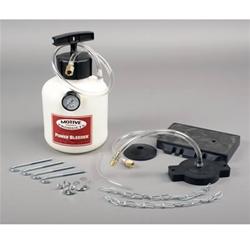BernieG
Member
Hi folks,
Time to replace my steering fluid as I can't tell if it's ever been done on my 2002 American Tug 34, and the flybridge steering seems a bit vague compared to the pilothouse station. No signs of leaks or any other problems though. Anyhow, I have been looking around for quotes which have ranged from $1100 to $1500. They say it takes 2 people 4-5 hours and needs 5 gallons of fluid.
They say it takes 2 people 4-5 hours and needs 5 gallons of fluid.
The boat is an American Tug 34 with 2 steering stations, one autopilot, and a single steering cylinder and rudder. The cylinder is easily accessible in the aft lazarette.
So, my question is how hard is it to do this procedure yourself? I am mechanically pretty handy and do all my own engine work. Also my wife has offered to help too. Looking at the Teleflex Sea Star literature and info on web it seems to only apply to smaller boats. Anyone done this on a 2 steering station boat?
Also, and suggestions for suppliers of cheaper ISO VG 15 hydraulic fluid than Sea Star?
Cheers
Bernie
Time to replace my steering fluid as I can't tell if it's ever been done on my 2002 American Tug 34, and the flybridge steering seems a bit vague compared to the pilothouse station. No signs of leaks or any other problems though. Anyhow, I have been looking around for quotes which have ranged from $1100 to $1500.
 They say it takes 2 people 4-5 hours and needs 5 gallons of fluid.
They say it takes 2 people 4-5 hours and needs 5 gallons of fluid.The boat is an American Tug 34 with 2 steering stations, one autopilot, and a single steering cylinder and rudder. The cylinder is easily accessible in the aft lazarette.
So, my question is how hard is it to do this procedure yourself? I am mechanically pretty handy and do all my own engine work. Also my wife has offered to help too. Looking at the Teleflex Sea Star literature and info on web it seems to only apply to smaller boats. Anyone done this on a 2 steering station boat?
Also, and suggestions for suppliers of cheaper ISO VG 15 hydraulic fluid than Sea Star?
Cheers
Bernie


